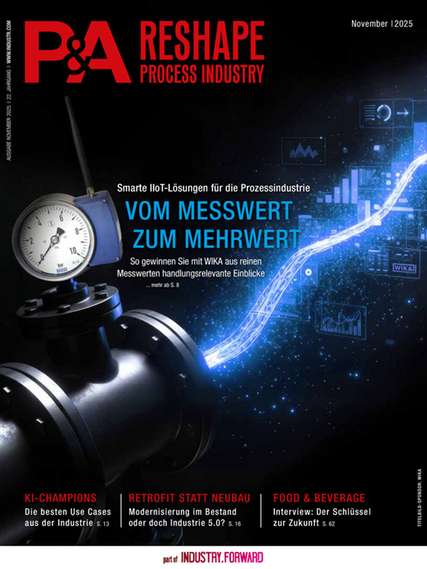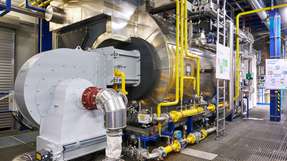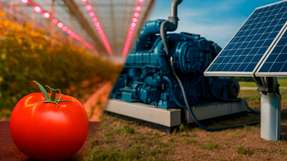Energy efficiency is a topic of perpetual importance for pump operators. Today almost every second euro they spend on life cycle costs goes towards power. By contrast, the costs for investment and installation constitute only 15 percent. A significant proportion of industry’s total energy consumption is accounted for by pumps and compressors. Plant operators are now more interested in the power consumption of their systems than they were only a few years ago. Existing industrial systems offer potential savings of between 30 and 40 percent. According to the German Energy Agency, for Germany this corresponds to around 14 billion kWh a year. For operators, this equates to annual savings of 1.12 billion euros and a reduction in CO2 emissions totalling 7.7 million tonnes. One of the reasons why energy is still being wasted in connection with pump operation: In processing facilities and refineries maximum priority is attached to productivity and fast restarting following repairs. Often, this is achieved at the expense of a hydraulically optimised system. When piping systems have been rearranged for production-related reasons, installed pump sizes often are not adjusted to match. Oversized and undersized valves, inadequate pipe radii and incrusted pipe cross-sections throttle the flow and contribute to the waste of energy.
Another widespread problem is that pumps often run far off of their originally envisaged operating point. Aggravating the situation is the fact that many pumps are selected with a 10 or 15 percent “safety margin”. It is relatively easy to select a hydraulically optimal pump for new installations. As long as the requirements are known, a energy-efficient pump set can be chosen with great accuracy by way of pump selection programs. It is, of course, essential that a large number of closely spaced pump sizes be available to the user, and that the impeller diameters be trimmed to match the required operating point. It is also of elementary importance that no safety margins be added. Even efficient pumps cannot run economically if they are used in the wrong operating mode. For an existing system which may have been in use for a number of years, determining potential savings is not quite as simple. The first step is to establish the pump’s operating point and operating mode. Other measures are derived from this data, and professional assistance can be useful in this connection.
The German pump specialist KSB offers the so-called SES System Efficiency Service and the Pump Operation Check. The SES System Efficiency Service consists of several steps, all of which are based on the measurement and analysis of the pump and system parameters, followed by a recommendation on the improvement measures to be implemented. First, a team of specialists conduct a site survey. Then special data loggers record all data of relevance over a representative period of time. These instruments measure the flow rates, the pumps’ suction and discharge pressures and electrical data of interest. The pumps’ bearing bracket vibrations are also measured. This data provides information on the wear state of each pump, hence enabling identification of misalignments, warping, imbalance and vibrations from the periphery. All these factors have major effects on pump availability and service life. The service specialists then conduct a detailed evaluation based on the measurement data gathered. They make suggestions on various cost-cutting measures and calculate the anticipated payback periods. Then, if an operator decides to implement one of the proposed steps, the service specialists will perform a second set of measurements on conclusion of the project in order to demonstrate the measure’s success.
Finding the optimum operating point
The Pump Operation Check assesses data gathered by the PumpMeter monitoring unit. This evaluation is based on pressure measurement at individual pumps over a representative period of time. The measured data is read from the PumpMeter without any impact on the operating process. As with the SES System Efficiency Service, staff from the manufacturing company offer recommendations for action to boost the efficiency and operational availability of the analysed pump. The use of variable speed pump sets suggests itself for hydraulic systems with time-dependent flow rates. What is perfectly normal in other fields of application, i.e. matching power input to actual demand, is still far from standard practice in many industrial applications. A detailed analysis of a pump’s operating behaviour often reveals that it is not running at its optimal, energy-efficient operating point. Common causes for operation under off-design conditions are either system oversizing or normal, temporary variations in flow rate arising from system processes. If power input is not adjusted to demand via some form of system control, valuable energy is wasted. By changing the motor speed, the flow rate and thus the pump input power can be reduced. In the case of closed-circuit systems, this allows energy savings of up to 60 percent. To this end, industry offers fully assembled variable speed systems delivered ready for operation whose configuration menus include parameters and terminology tailored to typical applications. Commissioning can be performed by simply entering a few further parameters. Additional functions enable efficient operation as well as reducing wear and minimising downtime.
The KSB PumpDrive system includes a function providing dynamic pressure compensation facilitating extra savings under low flow conditions. The motor-mounted system, which allows frequency inverters to be added to any electric IEC motor, can be retrospectively fitted to existing systems – a solution not possible using ready-made integral motors. Also, the system’s interface allows it to be easily integrated into a process control system. Energy-efficient motors have become popular in recent years and are heavily promoted by the European Union. Up until now, improved efficiency has mainly been achieved via the use of higher levels of copper and iron in conventional designs. However, the increased amounts of raw materials required markedly raise production costs. KSB therefore pursues a different strategy when building high-efficiency electric drives. The KSB Supreme synchronous reluctance motor (IE4) uses the same amount of copper normally required for an IE2 motor and does not incorporate magnetic materials such as rare earths. These are classed as critical raw materials, and obtaining them is extremely damaging to the environment of their countries of origin. In contrast to asynchronous motors, the motor’s efficiency is still impressive even if it is not operated at full load.
Halle 8.0 Stand H14














